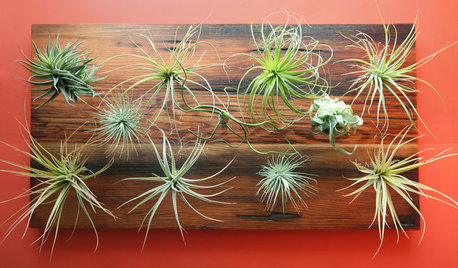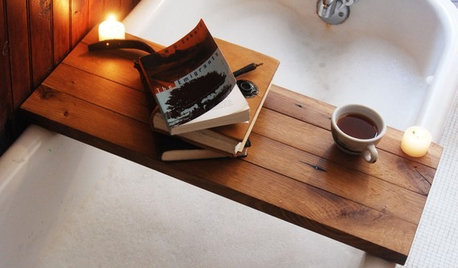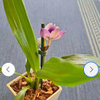Does anyone have experience with these 'Dirt Plants'?
orchidnick
12 years ago
Related Stories

URBAN GARDENSDirt Optional: Amazing Air Plants for Wall or Tree
Succulents and air plants are stunning on winter walls — and the Christmas tree
Full Story
LANDSCAPE DESIGNArt Brings a New Experience to Modern Home Exteriors
Sculptures and paintings on a home's exterior can create impact and interest before anyone even steps inside
Full Story
DECORATING GUIDESThe Cure for Houzz Envy: Dining Room Touches Anyone Can Do
Get a decorator-style dining room on the cheap with inexpensive artwork, secondhand furniture and thoughtful accessories
Full Story
KITCHEN DESIGNThe Cure for Houzz Envy: Kitchen Touches Anyone Can Do
Take your kitchen up a notch even if it will never reach top-of-the-line, with these cheap and easy decorating ideas
Full Story
MUDROOMSThe Cure for Houzz Envy: Mudroom Touches Anyone Can Do
Make a utilitarian mudroom snazzier and better organized with these cheap and easy ideas
Full Story
BUDGET DECORATINGThe Cure for Houzz Envy: Living Room Touches Anyone Can Do
Spiff up your living room with very little effort or expense, using ideas borrowed from covetable ones
Full Story
BUDGET DECORATINGThe Cure for Houzz Envy: Entryway Touches Anyone Can Do
Make a smashing first impression with just one or two affordable design moves
Full Story
BATHROOM DESIGNGuest Picks: The Perfect Bath Experience
Get ready for fancy bath time with glam fixtures, bath salts and a bottle of champagne (or two)
Full Story
LIFEThe Good House: An Experience to Remember
A home that enriches us is more than something we own. It invites meaningful experiences and connections
Full Story
ARCHITECTUREWorld of Design: A Tokyo Exhibit Experiments With the Future of ‘Home’
Japan’s architects and housing industry explore new ideas for dwellings that respond to changes in society, tech and the natural world
Full StoryMore Discussions









arthurm
orchidnickOriginal Author
Related Professionals
Wrentham Landscape Architects & Landscape Designers · Comstock Park Landscape Architects & Landscape Designers · Fitchburg Landscape Architects & Landscape Designers · Waterbury Landscape Contractors · Garland Landscape Contractors · Hampton Bays Landscape Contractors · Raleigh Landscape Contractors · North Aurora Landscape Contractors · Norridge Landscape Contractors · Palos Heights Landscape Contractors · Greensburg General Contractors · Los Lunas General Contractors · McPherson General Contractors · New Braunfels General Contractors · Rohnert Park General Contractorsterrestrial_man
orchidnickOriginal Author
orchidnickOriginal Author
arthurm
orchidnickOriginal Author
orchidnickOriginal Author
ginnibug
orchidnickOriginal Author
orchidnickOriginal Author
orchidnickOriginal Author
westoh Z6
MsFlintlock
orchidnickOriginal Author
orchidnickOriginal Author
orchidnickOriginal Author
rina_Ontario,Canada 5a
orchidnickOriginal Author
arthurm
whitecat8
Carol love_the_yard (Zone 9A Jacksonville, FL)
orchidnickOriginal Author
Carol love_the_yard (Zone 9A Jacksonville, FL)
orchidnickOriginal Author
Carol love_the_yard (Zone 9A Jacksonville, FL)
bea (zone 9a -Jax area)
Patrick Persijn